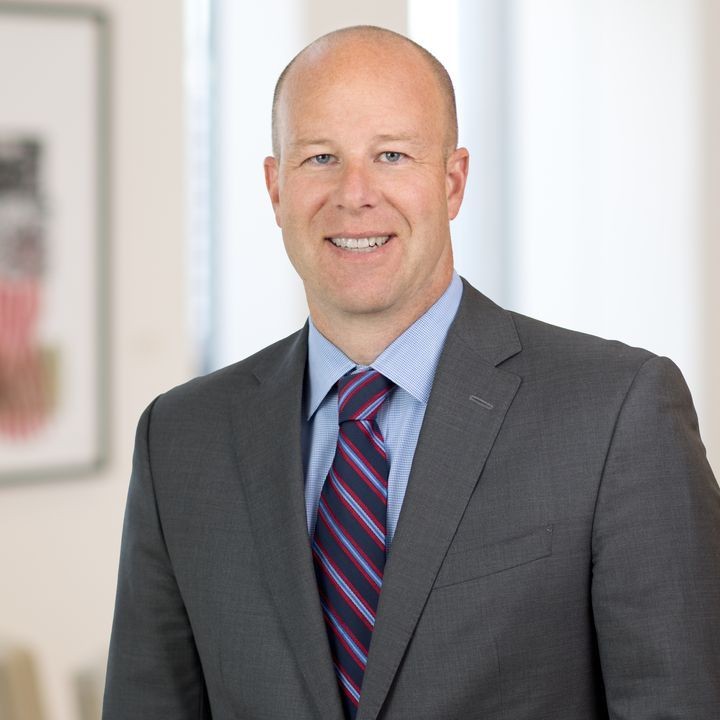Clarifying What’s Obvious: Vanda Seeks Supreme Court Review of Whether Obviousness Requires Predictability or Reasonable-Expectation-of-Success
Client Alert | 5 min read | 01.31.24
Drug development in the United States is expensive and time-consuming, which makes pharmaceutical patents an important asset for pharmaceutical companies to protect their investment in bringing new drugs to market. Equally important to the public and other drug companies is that any pharmaceutical patents that are issued by the Patent Office cover only technology that is new and not obvious. Clinical trials frequently lie at the intersection of these two competing interests. Pharmaceutical companies must engage in clinical trials to test their new products and the existence of those clinical trials may become public. But can the announcement of a trial itself render the resulting invention obvious and unpatentable?
That is just one of the questions that Vanda Pharmaceuticals Inc. (“Vanda”) raises in its recently-filed petition for writ of certiorari.[1]
Procedural Background
Several generic drug companies filed abbreviated new drug applications (“ANDAs”) with the FDA seeking approval to market generic versions of tasimelteon to treat Non-24, a circadian rhythm disorder that leads to sleep problems. Vanda sued for patent infringement under 35 U.S.C. § 271(e)(2)(A).[2] After years of litigation, the case proceeded to a four-day bench trial, where the district court found that Vanda’s patents were invalid as obvious because each of the claimed limitations were taught or suggested by various combinations of certain prior art references, including Vanda’s own clinical trials, and a person of ordinary skill in the art would have been motivated to combine those references and would have had a reasonable expectation of success in doing so.[3]
The Federal Circuit affirmed and noted specifically that “[o]bviousness does not require certainty—it requires a reasonable expectation of success.”[4]
Vanda’s Cert Petition
On January 12, 2024, Vanda filed a petition for writ of certiorari to the Supreme Court seeking review from the Federal Circuit’s decision.[5] According to Vanda, “Vanda’s clinical studies – performed at considerable expense and over many years – enabled Vanda to secure FDA approval in 2014 for Hetlioz® as the first-ever therapy to treat Non-24.”[6]
The question presented to the Court with respect to the patents covering this product is:
Whether obviousness requires a showing of “predictable” results, as this Court held in KSR, or a mere “reasonable expectation of success,” as the Federal Circuit has held both before and after KSR?[7]
Vanda’s petition advances three main reasons why the Court should take this case:
First, Vanda argues that the Federal Circuit’s decision conflicts with the Court’s earlier precedents, including KSR, and the purpose of 35 U.S.C. § 103.[8] In KSR, the Court rejected the Federal Circuit’s “rigid” approach to obviousness under the “teaching, suggestion, or motivation” test and found that “[i]f a person of ordinary skill can implement a predictable variation, § 103 likely bars its patentability.”[9] The Court further stated that for obviousness challenges, “court[s] must ask whether the improvement is more than the predictable use of prior art elements according to their established functions.”[10]
As applied to this case, Vanda argues that the Federal Circuit’s reasonable-expectation-of-success standard “disregards the lessons of KSR and has, in application, resulted in a materially lower threshold for obviousness than that found in this Court’s precedents and reaffirmed in KSR.”[11] Vanda further argues that, as a practical matter, the Federal Circuit’s standard would “effectively require[] that skilled artisans . . . need to think an experiment would fail for the result to be nonobvious,” which “[i]n a world where drug development costs range from $1 billion to $3 billion,” is unlikely to happen.[12] Moreover, Vanda claims that “[b]y allowing the fact of an experiment to itself indicate obvious, the Federal Circuit’s reasonable-expectation standard cannot be squared with Congress’s express instruction that ‘[p]atentability shall not be negated by the manner in which the invention was made.’”[13]
Second, Vanda alleges that no other circuit has adopted the Federal Circuit’s reasonable-expectation-of-success standard and summarizes cases from the Second Circuit, Third Circuit, Fifth Circuit, Seventh Circuit, Ninth Circuit to support its position.[14]
Third, Vanda asserts that this case is particularly timely and important in view of the Court’s decision in Amgen Inc. v. Sanofi[15] and notes that “[b]y allowing the existence of an ongoing study or FDA suggestions of possible studies as indicia of obviousness, the Federal Circuit’s decision below all but forecloses a drug manufacturer’s attempt to reach the very results Amgen requires for patentability under Section 112.”[16] Put another way, Vanda claims that “under Amgen, it is generally too early to patent pharmaceutical method claims prior to obtaining the results of clinical trials,” but under the Federal Circuit’s standard, “once clinical trials are announced, it is too late to patent eventual discoveries, because the announcement of the trial itself will render obvious the resulting invention.”[17]
Implications
This case is important for patent practitioners to monitor because the Court has not addressed obviousness since it issued KSR 17 years ago, and KSR did not involve the pharmaceutical arts, which can be less predictable than the mechanical arts. The term “reasonable expectation” does not appear in KSR, however, in another case that was issued shortly after KSR, the Federal Circuit observed in dicta that “[t]o the extent an art is unpredictable, as the chemical arts often are, KSR’s focus on these ‘identified, predictable solutions’ may present a difficult hurdle because potential solutions are less likely to be genuinely predictable.”[18]
Whether the obviousness standard set forth in KSR should be re-visited remains to be seen. The difference between the reasonable-expectation-of-success standard and the predictability standard, if any, is not readily apparent. Also, whether a particular clinical trial is sufficient to render a patent claim obvious is a highly fact-specific inquiry that does not lend itself to broad pronouncements from the Court. Nevertheless, the perceived tension with Amgen v. Sanofi (i.e., if a company publishes clinical trials, the patent is invalid as obvious; if it doesn’t publish clinical trials, the patent is invalid under § 112) is an intriguing hook for the Court to consider. If certiorari is granted, the resulting decision may change how the obviousness standard is framed and applied to patent cases, particularly those cases that concern pharmaceutical patents.
[1] Petition for Writ of Certiorari at 30, Vanda Pharms. Inc. v. Teva Pharms. USA, Inc. (No. 23-768).
[2] Vanda Pharms., Inc. v. Teva Pharms. USA, Inc., No. CV 18-651-CFC, 2022 WL 17593282, at *1 (D. Del. Dec. 13, 2022), aff'd, No. 2023-1247, 2023 WL 3335538 (Fed. Cir. May 10, 2023).
[3] Id. at *1, *27.
[4] Vanda, 2023 WL 3335538, at *7 (emphasis added).
[5] See generally id.; see also Vanda Pharms. Inc. v. Teva Pharms. USA, Inc., No. 2023-1247, 2023 WL 3335538 (Fed. Cir. May 10, 2023).
[6] Petition for Writ of Certiorari, supra note 1, at 9.
[7] Petition for Writ of Certiorari, supra note 1, at i.
[8] Id. at 13-17.
[9] KSR Int'l Co. v. Teleflex Inc., 550 U.S. 398, 415 (2007).
[10] Id. at 417 (emphasis added).
[11] Petition for Writ of Certiorari, supra note 1, at 17.
[12] Id. at 20 (emphasis in original).
[13] Id. (quoting 35 U.S.C. § 103).
[14] Id. at 20-25.
[15] 598 U.S. 594 (2023).
[16] Id. at 29-30.
[17] Id. at 30.
[18] Eisai Co. v. Dr. Reddy's Lab'ys, Ltd., 533 F.3d 1353, 1359 (Fed. Cir. 2008).
Contacts
Insights
Client Alert | 6 min read | 01.16.26
Trump Administration Rolls Out New DOJ Division for National Fraud Enforcement
On January 8, 2026, the Trump Administration announced the creation of a new Division for National Fraud Enforcement within the Department of Justice (DOJ). The division will be led by a newly appointed Assistant Attorney General (AAG), pending Senate confirmation, who will report directly to both the President and Vice President and operate out of the White House. Such a reporting structure is unprecedented in the history of the DOJ.
Client Alert | 4 min read | 01.15.26
Access to Public Domain Documents Pilot: Practice Direction 51ZH
Client Alert | 4 min read | 01.14.26
Client Alert | 3 min read | 01.13.26




